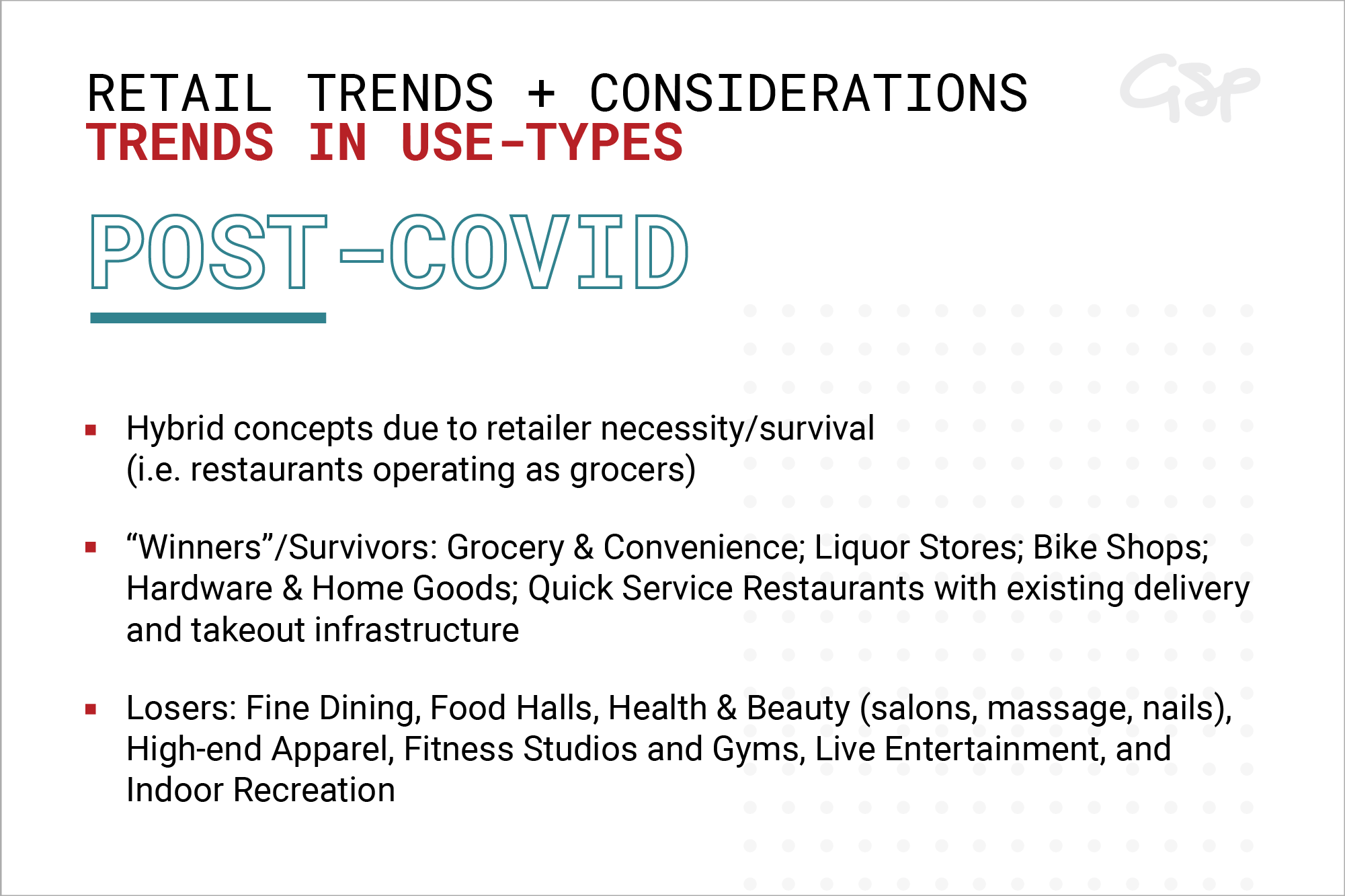Retail Trends + Considerations: Part One
The destruction COVID-19 has brought on the retail and restaurant industry came at the height of the real estate market where retail tenants were expanding, getting capital injections, and experiencing high revenue levels that mostly took place from transactions in the physical store or restaurant. It also came at a point where landlords were able to both use retail as amenities for upstairs tenants, but also charge a premium for the space since the profits those tenants were making justified high rent numbers. Consumer behavior and space requirements were taken for granted – the more seats or product that could fit into the space, the better, which would only create more positive buzz around the brand. Patio space was an added bonus, but not something that was highly sought-after. Experiencing the climate we’re in today, it is clear that the retail trends of pre-COVID times are going to pivot like everything else has. Some retailers will get to the other side of the pandemic, but will likely look a little different; while others simply won’t. Shifts in consumer behavior, space requirements, landlord-tenant partnerships and general demand will carve out new trends.
In this post, and in subsequent parts, Graffito will look to highlight the changes in trends around use-types, space needs, economics and the general outlook that we are already experiencing today, and anticipate will have some staying power in the years to come.
USE-TYPES
Sought-after retail anchors that littered urban markets pre-COVID were food halls, beer gardens, and entertainment uses. Providing high “points of contact” for patrons and maximizing capacities to the fullest. Landlords with new and existing mixed-use projects would curate the ground floor with amenities for the upstairs tenants, which would undoubtedly include a full-service restaurant. Today and post-COVID, we anticipate retailers leveraging their omni-channels to generate sales online and expanding their offerings in brick and mortar locations – ex. restaurants selling produce boxes, meal kits, etc. Landlords will continue to curate the ground floor, but will need to be more selective on the operator and use.
For all other parts, click here.






